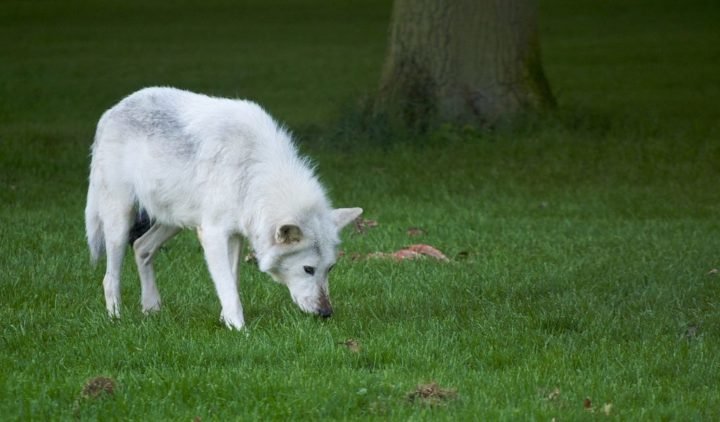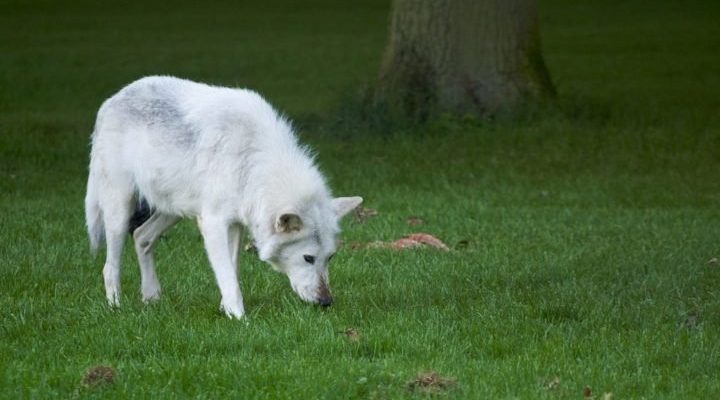
Imagine a hunter in a snowy wilderness. The tundra wolf is much like that hunter, relying on instinct, teamwork, and well-honed skills. Unlike wolves in milder regions, these wolves have to be exceptionally strategic to find food in an environment where resources can be sparse. So, let’s dive into the world of the tundra wolf, exploring what they eat, how they hunt, and why it all matters in the grand scheme of their ecosystem.
What Do Tundra Wolves Eat?
Tundra wolves have a diet that’s quite diverse, but it’s primarily focused on large prey. Their main sources of food include:
- Caribou: Tundra wolves often hunt caribou, which are well-suited to cold environments. During migration, these wolves track herds, taking advantage of the caribou’s movements.
- Arctic Hares: When larger prey is scarce, tundra wolves will turn to smaller animals like Arctic hares. These hares are quick and agile, adding a different challenge to the hunt.
- Rodents: In the deep winter months when larger animals are hard to come by, tundra wolves may hunt smaller mammals like lemmings and voles.
You might be wondering how they manage to hunt in such a cold place. Well, their fur is thick and insulative, allowing them to withstand freezing temperatures. This helps them stay stealthy while stalking their prey in the soft snow. Plus, their keen senses of smell and hearing are vital tools for locating food in the vast, white wilderness.
The Hunting Strategies of Tundra Wolves
Hunting is an art, and for tundra wolves, it requires teamwork and strategy. One of the most notable strategies is how they work in packs. A wolf pack can consist of anywhere from 2 to 15 members, and each member plays a role in hunting. Here’s how they do it:
- Cooperative Hunting: Tundra wolves often hunt in teams, leveraging their numbers to take down larger prey like caribou. They can surround the animals, cutting off escape routes.
- Stamina Over Speed: These wolves rely on endurance rather than speed. They often chase their prey over long distances, exhausting them before going in for the kill.
- Ambush Tactics: Sometimes, rather than chase their prey, tundra wolves will wait in a hidden spot. This allows them to launch a surprise attack when their target gets close.
You might think of it like a well-rehearsed play—each wolf knows their part and timing. This teamwork not only increases their chances of catching a meal but also strengthens the bonds within the pack.
The Role of Seasons in Hunting
Seasons play a significant role in the hunting patterns of tundra wolves. During summer, when the tundra is teeming with life, their hunting strategies may change. Here’s how:
- Increased Mobility: In warmer months, prey like caribou are more dispersed, making it sometimes easier to find smaller, solitary animals.
- Shorter Days: As the days grow shorter in winter, wolves may need to adjust their activity patterns, hunting more during twilight or early dawn when prey is most active.
- Pack Dynamics: In harsher weather, pack dynamics might shift. Some members might stay behind to care for pups while others hunt, balancing the needs of the pack.
These seasonal shifts demand that tundra wolves be adaptable, always adjusting their behavior based on the changing landscape and available food supply.
The Impact of Climate Change on Tundra Wolves
As climate change affects ecosystems worldwide, tundra wolves are not immune. The changing climate alters prey availability and habitat conditions. Here’s what it means for these incredible animals:
- Prey Migration: With warming temperatures, caribou herds may migrate to new areas, forcing wolves to follow and adapt to new hunting grounds.
- Increased Competition: As habitats change, wolves may face increased competition from other predators, necessitating shifts in hunting strategies.
- Habitat Loss: Thawing permafrost can disrupt the tundra ecosystem, impacting the overall health of prey populations.
Honestly, the survival of tundra wolves hinges on their ability to adapt—not just to the physical environment but also to the shifts happening around them. Their resilience is a testament to their nature and a crucial part of the Arctic’s ecological balance.
The diet and hunting strategies of tundra wolves are a brilliant showcase of nature’s adaptability. These wolves are more than just apex predators; they’re essential players in their ecosystem, keeping prey populations in check and helping to maintain balance in the tundra.
Understanding their behaviors not only broadens our knowledge of wildlife but also highlights the importance of conservation efforts. As the Arctic continues to face challenges from climate change, respecting and protecting these majestic animals becomes increasingly important.
So, the next time you hear a wolf howl or read about these magnificent creatures, remember just how much they’ve adapted to survive in one of the world’s toughest environments. They’ll keep running across the tundras, hunting and thriving, as long as we support their home.

